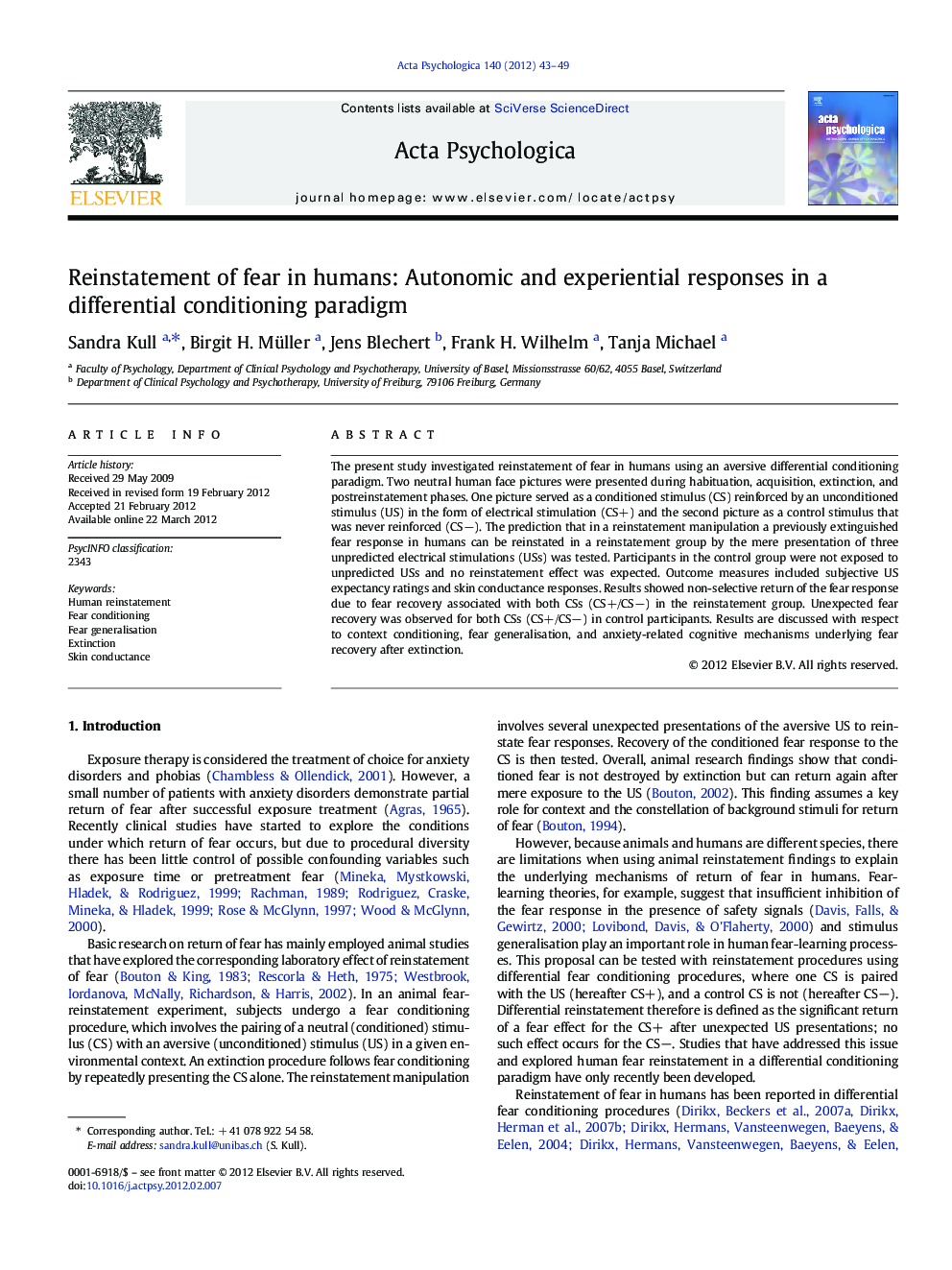| Article ID | Journal | Published Year | Pages | File Type |
|---|---|---|---|---|
| 919971 | Acta Psychologica | 2012 | 7 Pages |
The present study investigated reinstatement of fear in humans using an aversive differential conditioning paradigm. Two neutral human face pictures were presented during habituation, acquisition, extinction, and postreinstatement phases. One picture served as a conditioned stimulus (CS) reinforced by an unconditioned stimulus (US) in the form of electrical stimulation (CS+) and the second picture as a control stimulus that was never reinforced (CS−). The prediction that in a reinstatement manipulation a previously extinguished fear response in humans can be reinstated in a reinstatement group by the mere presentation of three unpredicted electrical stimulations (USs) was tested. Participants in the control group were not exposed to unpredicted USs and no reinstatement effect was expected. Outcome measures included subjective US expectancy ratings and skin conductance responses. Results showed non-selective return of the fear response due to fear recovery associated with both CSs (CS+/CS−) in the reinstatement group. Unexpected fear recovery was observed for both CSs (CS+/CS−) in control participants. Results are discussed with respect to context conditioning, fear generalisation, and anxiety-related cognitive mechanisms underlying fear recovery after extinction.
